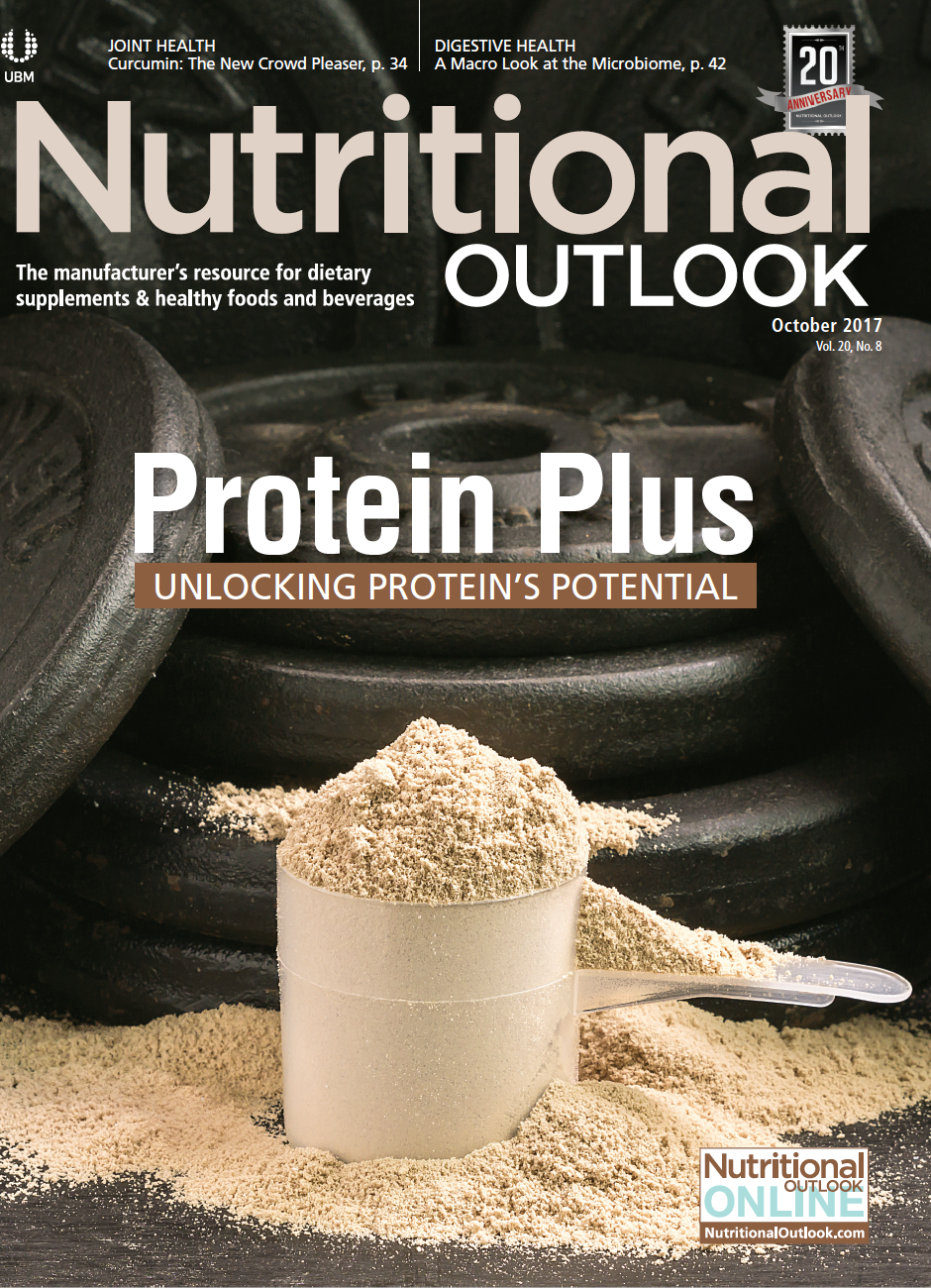Glutathione Guidebook
Getting to know the “mother of all antioxidants.”
Even nutrition nerds might need to consult their smartphones when pressed to describe what glutathione is-and why it matters. After all, this unassuming tripeptide doesn’t enjoy the same high profile as, say, curcumin, probiotics, pea protein, or any of the other “trending” nutrients jamming Google’s search engines. But that doesn’t mean it’s not important. Nor does it mean that its profile isn’t rising.
For while glutathione has flown under the radar for years, its ineluctable role in human health, not to mention mounting evidence of its benefits, is finally earning it the attention it deserves. According to Elyse Lovett, marketing manager, Kyowa Hakko USA (New York City), glutathione awareness rose from 7% in 2015 to 9% a year later, as measured by the 2016 Gallup Study on Nutrient Knowledge & Consumption. And as for the academy’s role, the number of glutathione-related items found in PubMed’s database rose from a mere 469 in 1976 to 5,826 in 2016.
So why does glutathione deserve attention? Because it really is-as it’s often called-the “mother of all antioxidants.” Comprising the amino acids cysteine, glycine, and glutamine, glutathione, or GSH, is found in every cell of the body, which produces it endogenously. Its location within the cells optimally situates it for protecting cellular structures against oxidation, which it does by siccing its thiol (-SH) groups on free radicals wherever they attack.
But that’s not all that glutathione does. As an antioxidant, glutathione helps maintain active stores of other key free-radical fighters, like vitamins C and E. It participates in the synthesis of DNA, proteins, and prostaglandin hormones. It aids amino acid transport. It’s involved in cell cycling and differentiation. It even helps activate some enzymes. Linked to everything from cancer and heart disease to dementia, cystic fibrosis, and autism, it’s especially important in immune and detoxification functions.
In fact, says Lovett, “I’ve been seeing many more innovative products on the market for detoxification.” Manufacturers, she says, “are noticing the importance of tying overall health with not only the immune system, but with detoxification, too. Some are even going one step further and tying in the antiaging benefits of antioxidants like glutathione.” No wonder the top-three reasons people turn to glutathione these days are its utility as a powerful antioxidant, its appeal as an antiaging nutrient, and its reputation as a detoxifier, she says.
But if our bodies produce glutathione endogenously, why do we need to supplement it at all? The reason lies within: when glutathione guards our cells against oxidation, it nobly sacrifices itself in the process, becoming oxidized to its glutathione disulfide form.
Under ideal circumstances, glutathione disulfide can be reduced back to active glutathione courtesy of the electron donor nicotinamide adenine dinucleotide phosphate (NADPH). But contemporary circumstances are rarely ideal. We live in an oxidative environment, with assaults from pollution, poor diet, stress, and even the passage of time all attenuating the body’s ability to maintain sufficient stores of active glutathione. And yet a high cellular ratio of oxidized to reduced glutathione is widely acknowledged as an indicator of oxidative stress and a warning sign of future health problems.
So don’t let glutathione go by the wayside. “There are so many antioxidants out there,” Lovett says. With continued research and in combination with other ingredients, she says, “We’re learning more about the benefits of glutathione and all these nutrients.”
Want to learn more? Keep clicking and gain a whole new appreciation for glutathione, the unsung antioxidant.
CLICK ON IMAGES TO VIEW SLIDESHOWPhoto © Shutterstock.com/Zerbor

Prinova acquires Aplinova to further increase its footprint in Latin America
April 7th 2025Prinova has recently announced the acquisition of Brazilian ingredients distributor Aplinova, which is a provider of specialty ingredients for a range of market segments that include food, beverage, supplements, and personal care.

























